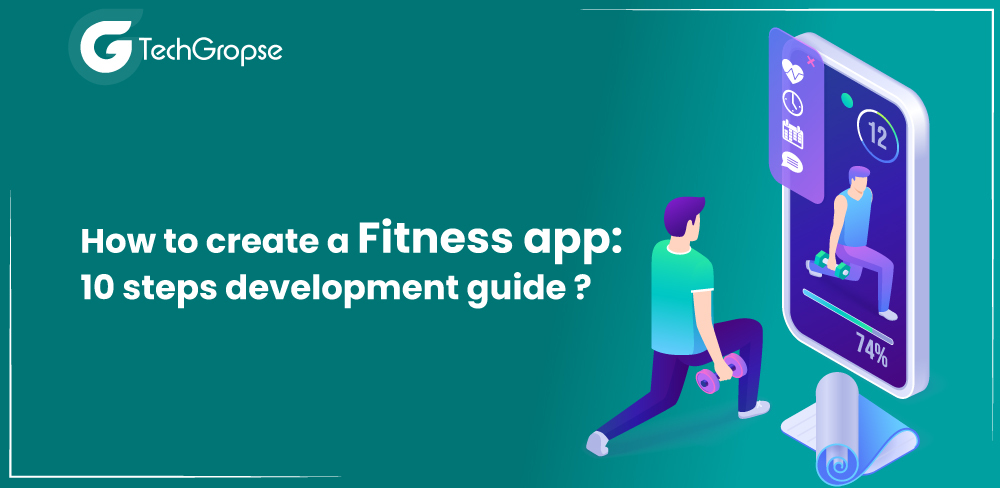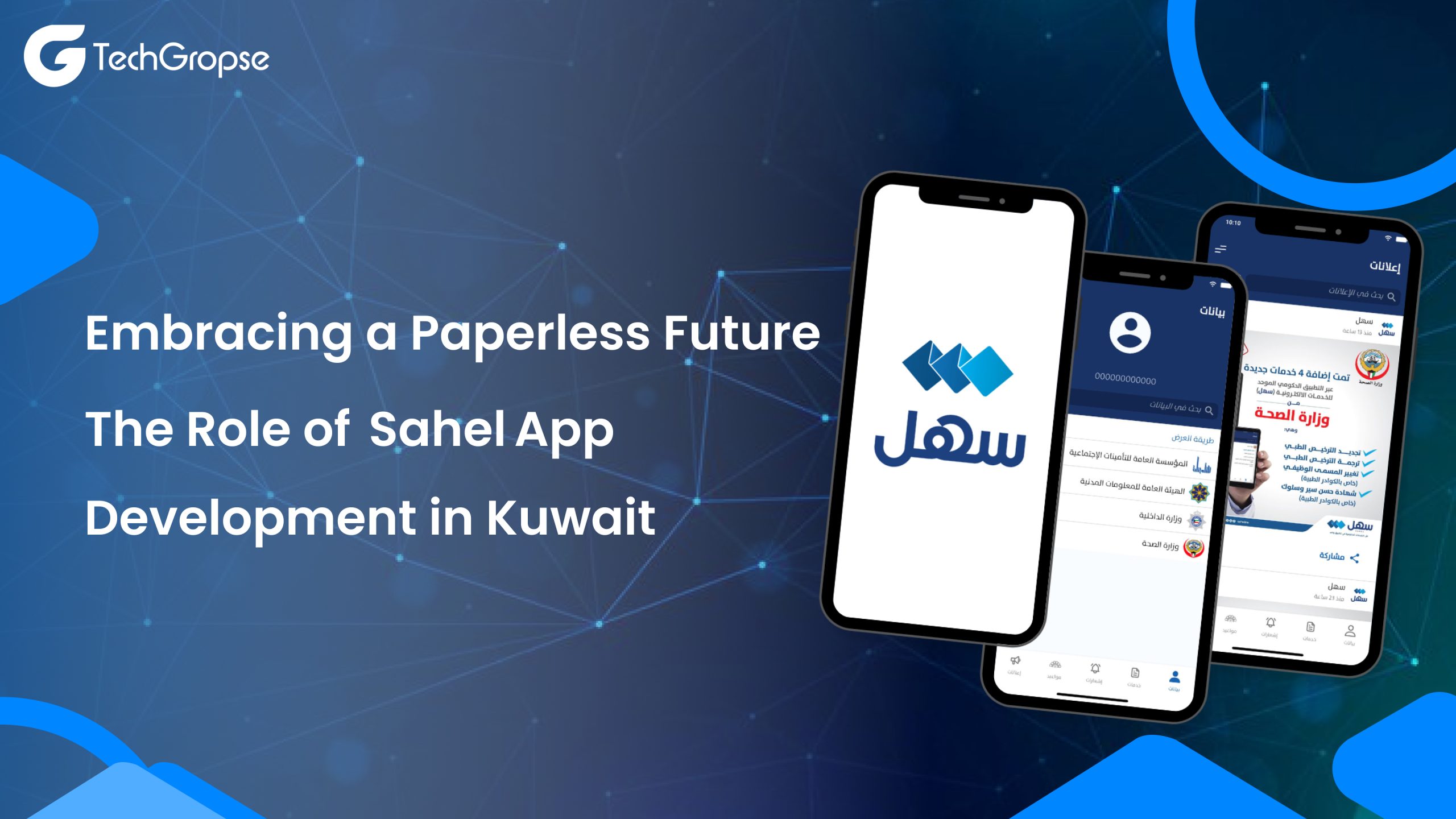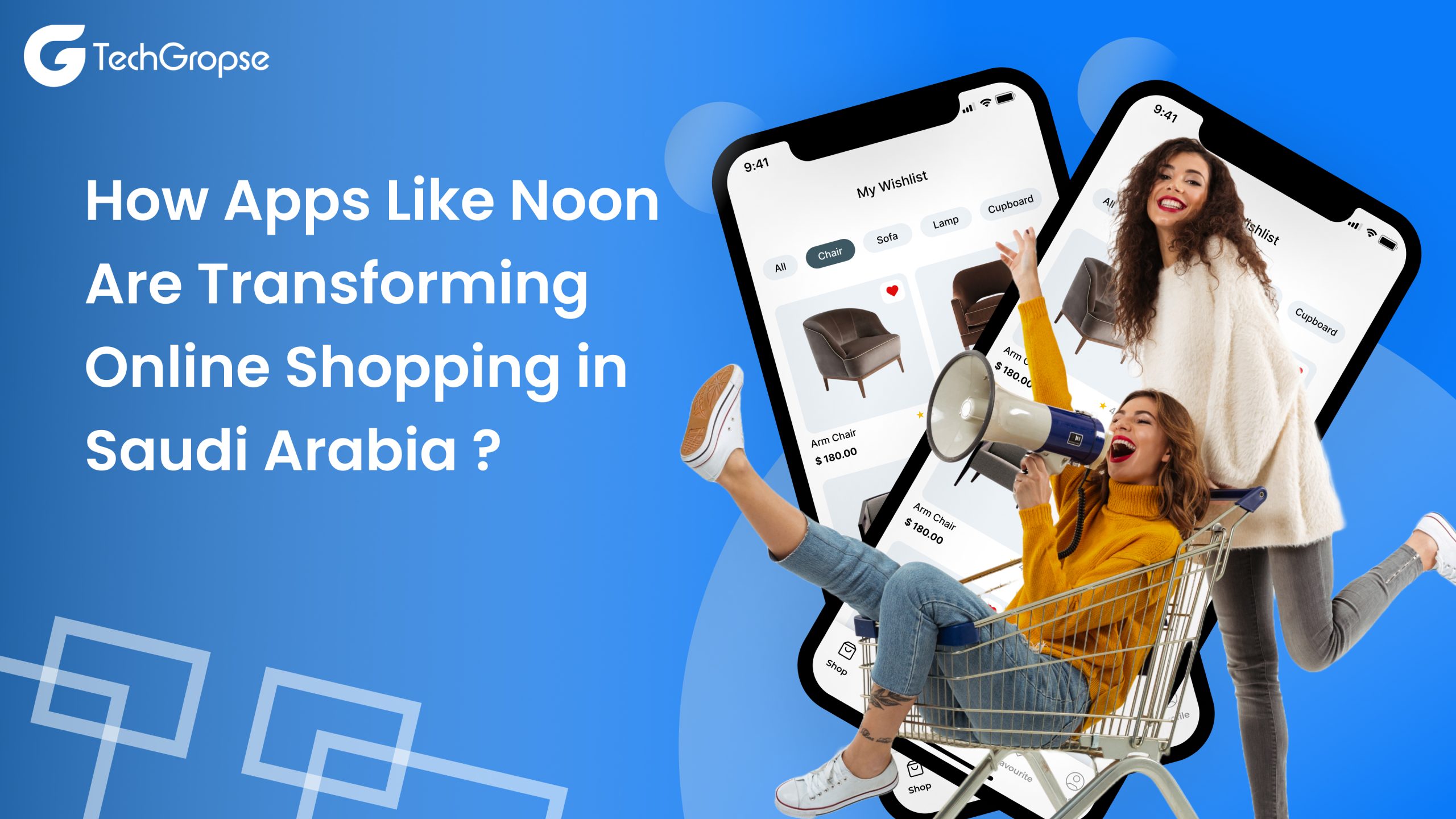Fitness is a building block for our wellness and health. After the pandemic, people realise that health and fitness are most important. As a result, billions of people download fitness applications on their phones. Therefore, the demand for fitness app development is becoming more popular and trending in today’s time. In today’s time, the revenue of the fitness app is between 8 billion to 10 billion which may increase to 20 billion in 2025.
As a result, the demand for fitness app development is becoming more popular. No doubt that a fitness application’s main focus is on guiding, analyzing and monitoring users’ day-to-day fitness activities. Therefore, it is a good idea to build a fitness application including rich features. However, building a functional and robust application is not an easy task.
In such a case, it is suggested to search for a leading fitness app development company that is committed to providing ultimate solutions. A leading app development company always takes care of the quality, which is why it is an ideal choice to create a fitness app. But, finding a leading company is not a cakewalk. In today’s blog, we will discuss the app development process briefly, features a fitness app must have and many other things you have to know prior to building a fitness app.
Market State of Fitness App in 2023
During the pandemic, fitness applications became more integrated into daily routines as people aimed to enrich their lives at home. This instant incited irreversible, long-lasting changes that included a digital coat to the global fitness market. Every year thousands of applications launch in the app store, and millions of people download the application.
The fitness application industry has grown significantly because it focuses on health and easy access through smartphones. The market will be worth $1.3 billion in 2022 and is expected to grow by 15% from 2022 to 2025. According to Airship research, nearly 50% of fitness application users are both millennials and Gen Z, with 20% each.
Different Types of Fitness Applications
If you are looking for fitness app developers to build a fitness app, you have to be aware of the diversity in this niche. There are different types of fitness apps in the market, so you have to choose which type of application you want to build. Below, we list out different types of fitness apps, so you can choose one to pick an idea for building your own application.
1. Activity Tracking Apps
This kind of application promotes healthier and more active life by tracking user’s daily activities. Activity tracking applications generally track and calculate the daily steps of users, exercise information, sleep data, calories burned and many more. The application can log user activity by measuring the distance, speed and pace and monitors routes.
Moreover, it counts the number of steps and tracks the rhythm of the steps as you walk or run. You know that most activity-tracking apps support wearable devices such as Android Wear or Apple Watch. You can also build this type of app to help users stay healthy and fit.
However, on-demand fitness app development is not an easy task. Henceforth, you have to seek the help of a team of professionals who are talented and skilled to build a functional app.
2. Workout Tracking and Planning Apps
These apps are designed to help users create personalized workout plans and track their progress over time. Users can enter their fitness goals, such as losing weight, gaining muscle, or improving endurance, and the app will create a workout plan tailored to their needs. Popular apps like “Fitbod” and “StrongLifts 5×5” provide users with a variety of workouts, tutorials, and tracking features to monitor their performance and make necessary adjustments. These apps are ideal for people who enjoy a structured exercise routine.
If you want to build a workout tracking and planning app, you have to search for an on-demand app development company that has good knowledge and expertise in crafting a functional app.
3. Nutritional and Dietary Applications
Good nutrition plays an important role in achieving fitness goals. Nutrition and dieting apps like “MyFitnessPal” and “Lose It!” » help you track daily food intake as well as count calories. These apps often have extensive food databases, barcode scanners, and recipe calculators to make meal recording simple.
They may be beneficial for people who want to control weight, optimize their diet, or track specific nutrients. But many people have a question about how to create a diet app! If you have the same concern, this blog may be helpful to you. In this post, we list out a complete guide to building a functional app.
4. Running and Cardio Apps
For those interested in cardiovascular fitness, running and cardio apps are a must. Apps like “Strava” and “Nike Run Club” track users’ running, walking and cycling sessions using GPS technology. They provide real-time data on distance, speed, heart rate, and more.
Users can set goals, complete challenges, and connect with a community of like-minded people to stay motivated. These apps are perfect for runners and outdoor fitness enthusiasts. You can take an idea from this app, to build your own application.
However, you have to contact the professionals as they are well experienced and they have good knowledge in the fitness app development field. This is why you have to contact the professionals for ultimate solutions.
5. Yoga and Mindfulness Applications
Yoga and mindfulness apps like “Headspace” and “Yoga for Beginners” focus on mental and physical health. They offer guided meditation sessions, yoga routines, and breathing exercises to reduce stress, improve flexibility, and improve mental clarity.
Users can choose from different programs depending on their skill level and goals. These apps are ideal for those searching for relaxation and balance in their fitness journey. If you have the same question about how to create a yoga app, you have to read this post. We will give brief details to build yoga and mindfulness apps.
6. Community and Social Fitness Applications
Social fitness apps like “Fitbit” and “MapMyFitness” emphasize community participation and competition. Users can connect with friends, participate in challenges, and share their progress. These apps often sync with wearable fitness trackers and provide rewards for reaching milestones.
The social aspect of these apps can be motivating for those who thrive on encouragement and friendly competition. But, prior to handing over your project to someone, it is required to know the fitness app development cost. It will assist you in setting a budget for your app development project.
7. Specialized Training Applications
Specialized workout apps cater to specific fitness preferences or interests. For example, “JEFIT” is designed specifically for weightlifting enthusiasts, providing comprehensive strength training routines and progress tracking. “Peloton” provides access to live and on-demand indoor cycling classes with interactive features. These apps are perfect for people with unique interests and fitness goals.
These are some different types of fitness apps in the market. You can choose a type of application to build activity tracking app that helps users track their daily activity.
Features a Fitness App Must Have
There is no doubt that there are numerous fitness applications. So, it is obvious that you have to do something different to make your fitness app stand out among others. We listing popular user-oriented features that you have to include in your app:
- Dedicated User Accounts
This is an essential app a fitness app must have. Through the help of this feature, users can manage their personal information interactively. Henceforth, you have to make sure that the app includes this feature.
- Individual Exercises
One of the main reasons people turn to fitness apps is to find personalized workout plans. The app will assess the user’s fitness level, goals and preferences, and then create workout programs tailored to their specific needs. Whether someone is looking to lose weight, build muscle, or improve endurance, the app should provide a plan that fits their goals.
- Nutrition Monitoring
A comprehensive fitness app should include nutrition tracking. Users can enter their meals and snacks, and the app will provide information on calorie intake, macronutrient distribution and make recommendations for healthier eating based on individual goals.
- Track Progress
Tracking progress is crucial for motivation. The app will allow users to record their workouts, track weight, measurements and other relevant metrics over time. Graphs and charts can show progress visually, helping users stay motivated and adjust their plans as needed.
- Social Integration
To encourage accountability and motivation, fitness apps must allow users to connect with friends and share their progress on social media platforms. Friendly competition and peer support can be powerful motivators.
- Demonstration Video
For exercises and practice, demonstration videos are invaluable. Users can ensure that they are performing their exercises correctly and safely by watching step-by-step videos. These videos can also include modifications for different fitness levels.
- Goal Setting
Setting specific, attainable goals is an important part of any fitness journey. Fitness apps should allow users to set weight loss, strength gain, or any other fitness-related goals. It will also provide reminders and track progress towards these goals.
- Wearable Device Integration
Many users wear fitness trackers or smartwatches. The app must sync with these devices to provide real-time data on heart rate, steps taken, sleep patterns, and more. This integration improves the accuracy of physical activity tracking.
- Community and Support
In addition to social integration, a fitness app must foster a sense of community. Users should have access to forums, chat groups, or Q&A sections where they can ask questions, share experiences, and seek help from others on similar fitness journeys.
- Diverse Workouts
To avoid boredom and stagnation, a fitness app should offer a variety of exercises, including strength training, cardio, yoga, and more. It should be suitable for different fitness levels, from beginners to advanced athletes.
- Offline Access
While online functionality is essential, offline access is also essential. Users can download workouts and access content without an Internet connection, ensuring they can maintain their fitness routine wherever they are.
Step-By-Step Guide to Build a Fitness App
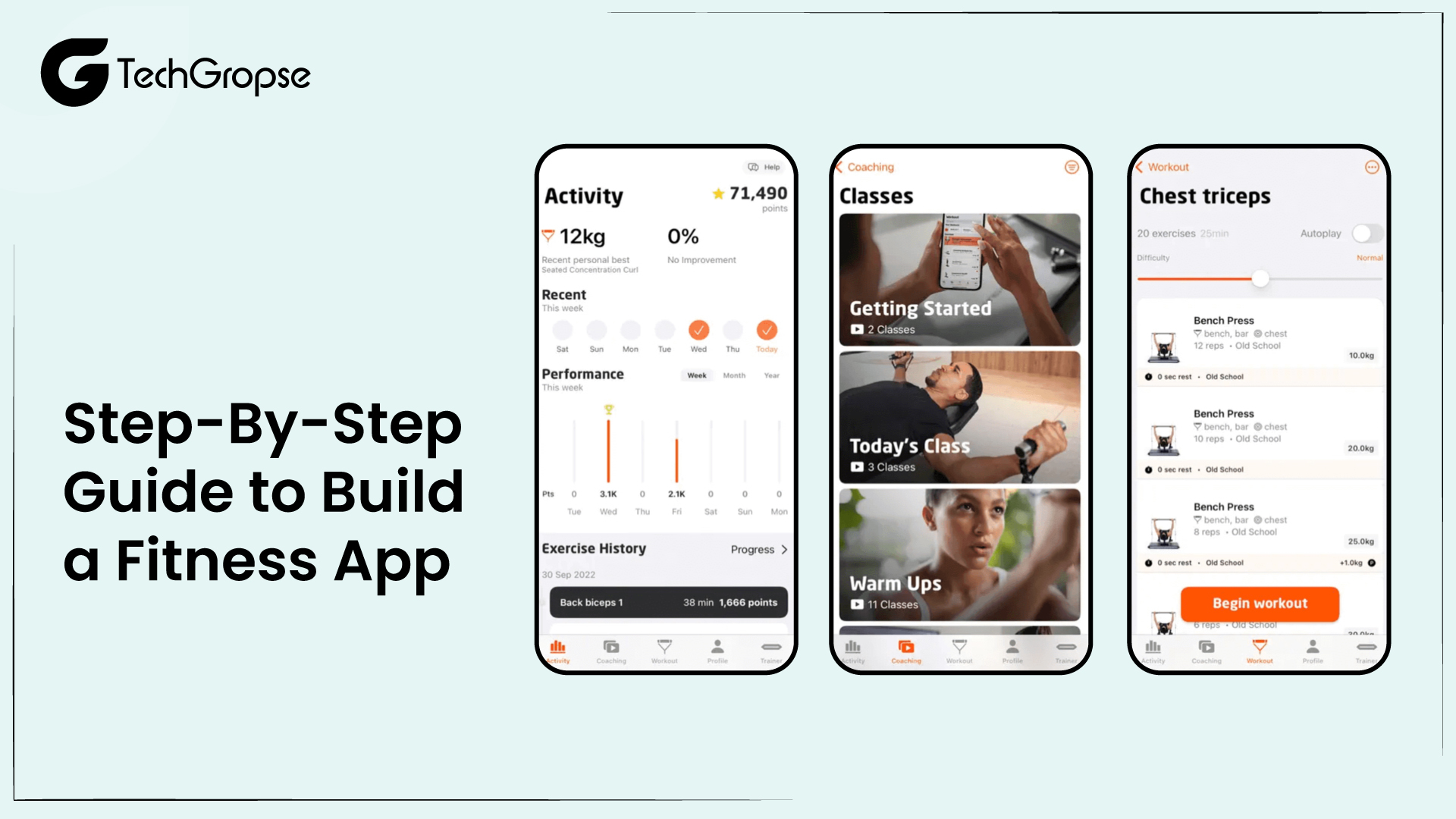
Once you know which features you have to include in your fitness app, it is time to start the fitness app development. If You want to build a fitness app, it is good to follow step-by-step guides. This will help you in completing the fitness app development process with ease.
1. Conduct Proper Market Research
Before you reach into the next step of fitness app development, it is important to identify your application’s focus. Determining your target audience is the best approach to understanding what you have to include in your app.
Therefore, you have to conduct proper market research to analyze the competition, gather data about user preferences and behaviour and identify the weaknesses of existing applications. It will help you complete the fitness app development instantly.
2. Select Features to Be Included
Now you have to select the features for your application. Deciding on the app features can always assist in designing the step-by-step breakdown of how to create a fitness app in 2023. You can check out the features section for an instant understanding of the different features your application can include. To make the procedure effective and more convenient, you can seek the help of an on-demand app development company.
3. Choose the Development Technology Stack
The tech stack plays an important role in the success of the application. Once you decide to build a fitness app, you need to choose the right tech stack. You must always consider other aspects like the application platform, security and maintainability. If you are not an expert in fitness app development, seek the help of a reputable mobile app development company.
4. Create a User-Oriented App Design
UI/UX is an essential aspect of fitness app development as it directly impacts user satisfaction. When you create a fitness app that is intuitive, easy to use and user-oriented, you are able to boost the growth of the app. In order to get a professional-looking design for your app, you can search for a reputed company that has a team of talented designers.
5. Hire an Experienced and Dependable Team
Once you choose technology and tech stack, it is time to hire an experienced and dependable team that will help you take your business to the next level. Having years of experience and knowledge the professional easily completes the development task.
6. Build a Minimum Video Product
Building an MVP can assist in understanding user opinions and getting feedback on your fitness application. An MVP is known for providing core functionalities and helping validate your mobile app idea. This will always help the development team figure out whether they missed adding any features or not.
7. Develop a Full-Fledged App
Now it is good to develop your application after taking user consideration and feedback into account. You are able to execute your initial plan on how to create a fitness app according to the latest trends.
8. Properly Test the App
Once the fitness app development is done, you have to test whether the application is behaving properly or not. Testing the individual features and the overperformance can always assist in identifying bugs. You can consider a combination of both manual and automation testing for better feedback and analysis.
Cost to Build a Fitness Application
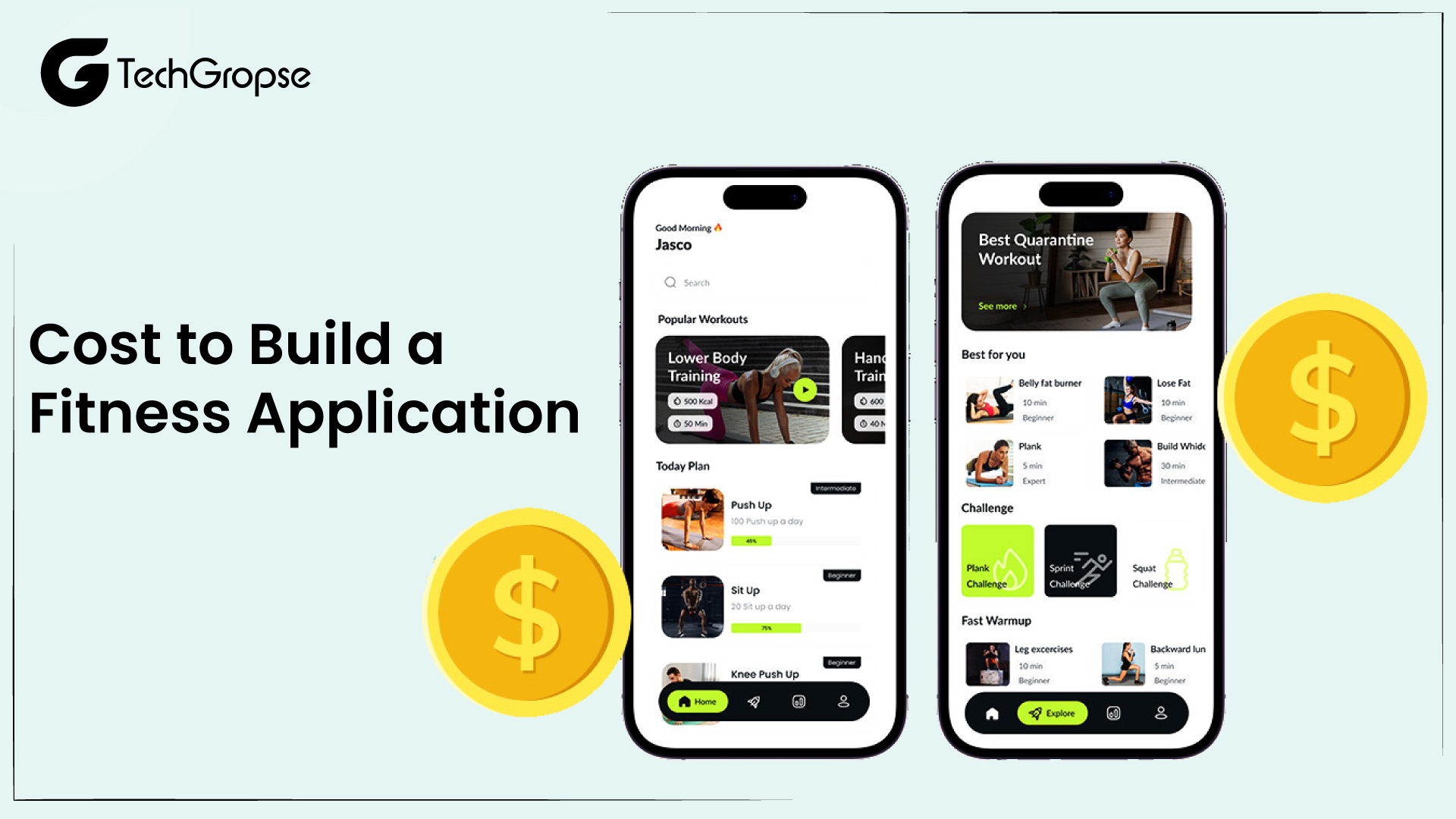
As we mentioned before, building a fitness app is not an easy task. If you want to craft a fitness app, it is necessary to know the cost of building a fitness app. If you know how much you have to spend to build an activity and fitness app, it is easy to set a budget that does not burn a hole in your pocket.
However, the fitness app development cost depends on numerous factors such as complexity, features, tech stack and many other things. If you don’t have any idea how much you have to spend to create an online app, the listed table gives you a brief idea about the fitness app development cost.
| Application Type | Description | Estimated Cost |
| Basic Fitness Tracker | Simple tracking and workout logic with limited features along with user profiles, step tracking and basic workout tracking. | $5,000-$15,000 |
| Workout Library App | A collection of pre-recorded workout videos and routines. Users are able to browse and follow along with workouts. | $10,000-$25,000 |
| Personal Trainer App | Customizable workout plans, nutrition tracking, integration with wearables and progress tracking | $20,000-$40,000 |
| Social Fitness Network | Includes features for social interaction, sharing progress and friend connections. | $25,000- $50,000 |
| Advanced Fitness App | All in one solutions with personalized workouts, social features, nutrition tracking, wearables integration and a comprehensive database of workouts. | $30,000-$60,000 |
| Virtual Reality Fitness App | Incorporates VR technology for immersive exercise and workouts. | $50,000-$100,000 |
Please note this is just an idea not the actual price. The fitness app development cost depends on which model you choose. Each company has different plans, so you have to choose one that suits your budget.
The Final Note
Creating a fitness app involves a systematic approach from idea to continuous improvement. By following the above-listed steps and maintaining a commitment to providing value to users, you can create a successful fitness app that helps individuals on their health and fitness journey while achieving their goals. your business goals.
If you don’t have any idea about coding and have no knowledge of technology, it is suggested to search for a leading mobile app development company that will assist you in building a functional and easy-to-use app.
FAQs
1. What’s the first step in building a fitness app?
Start with market research to identify your target audience, their needs, and your competition. Understand the unique value your app will offer.
2. Do I need to be a programmer to create a fitness app?
While having programming skills can be beneficial, you can also hire developers or work with a development team if you’re not a programmer.
3. What platform should I build the app for iOS or Android?
It depends on your target audience. Consider building for both platforms to reach a wider user base.
4. What features should I include in my fitness app?
Core features typically include user registration, workout tracking, nutrition tracking, goal setting, progress monitoring, and social sharing. Consider additional features like exercise tutorials, community forums, or integration with wearables.

Hello All,
Aman Mishra has years of experience in the IT industry. His passion for helping people in all aspects of mobile app development. Therefore, He write several blogs that help the readers to get the appropriate information about mobile app development trends, technology, and many other aspects.In addition to providing mobile app development services in USA, he also provides maintenance & support services for businesses of all sizes. He tried to solve all their readers’ queries and ensure that the given information would be helpful for them.






